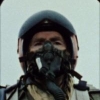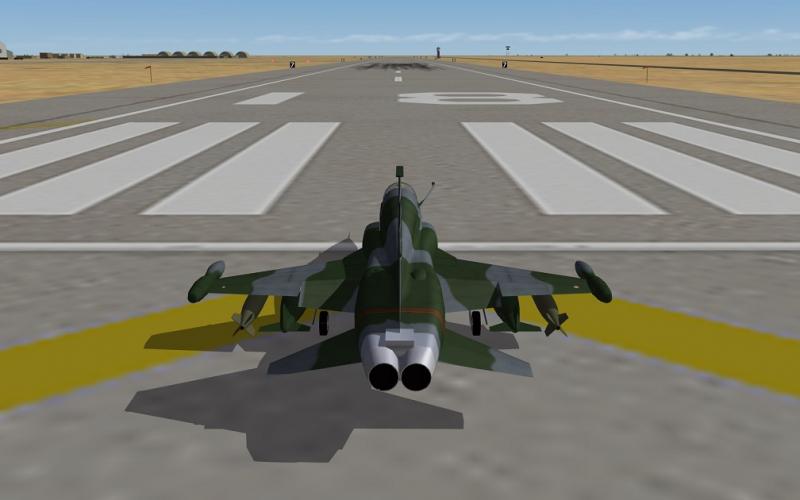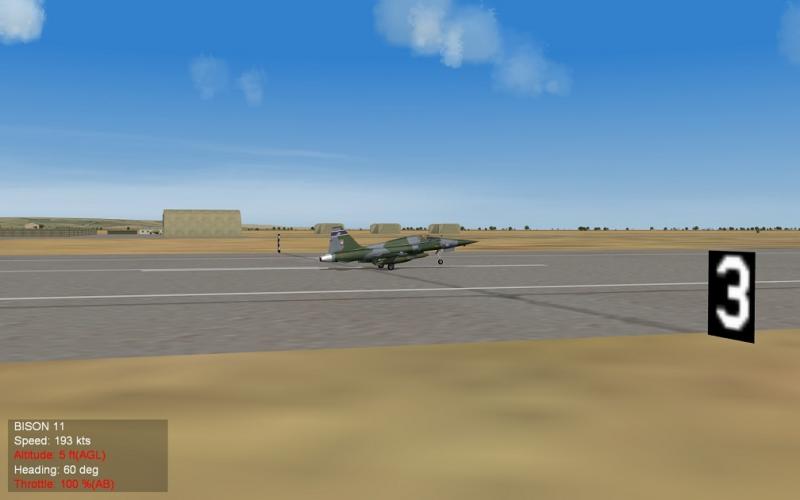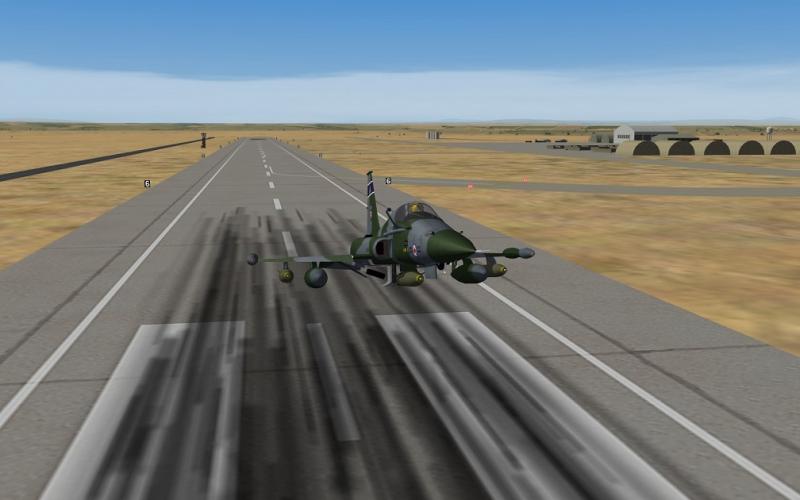-
Posts
1,290 -
Joined
-
Last visited
-
Days Won
11
Content Type
Profiles
Forums
Gallery
Downloads
Store
Everything posted by baffmeister
-
BoB!! is driving me Baffy!! I'm happy enough with the FMs and A.I. but the old 303 Browning versus cannons issue continues to be a bit of an issue. Also, I've been working a bit on a Dunkirk campaign that isn't doing what I want it to do. Now that I've got an MTO install set up I'm trying something closer to the ThirdWire approach for damage modeling. Been testing the lightly armed Sea Gladiator versus the CR-42 with no armor protection and the results seem about right. Used your gun alignment program on the Sea Glad and will align the CR-42 guns as well. I have to admit I'm rather fed up with all the experimenting. Might just go with something closer to a ThirdWire approach and be done with it. Only exception might be for the bombers. Pilot protection seems to be a bit of an issue so will probably use extra armor for bomber pilots to represent all the equipment/bodies behind them.
-
Attached is a drop in FM for the Raven/Wrench Sea Hurricane IIc available here: http://combatace.com/files/file/13561-sf2-ww2-hawker-sea-hurricane-iic-by-raven/ The FM is a quick adaptation of my BoB Hurricane II FM with some edits to make the damage modeling a bit more conventional. I put together an MTO install only a short time ago and after getting frustrated with some of the damage modeling with the BoB FM's I thought this would be a good time to try a more conventional approach. The Sea Hurricane gets self healing tanks, a bit of pilot armor and some front armor to represent armored glass but that's it. One of the main objectives was to test the Hurricane FM on the HMS Eagle to see if it could do the free take off. Seems to work fine. Here's the FM, make sure you back up the original: SeaHurricane_DATA0.95.zip
-
-
Attached is a modified data ini for HMS Eagle that I've been playing around with. The catapult has been moved to the back of the flight deck and doesn't generate any force to accelerate the aircraft. It's a work around to allow free take offs. This mod may not work with some aircraft. Most of my testing has been done with Geezers Sea Gladiator and I have seen a few AI Glads go "over the side" during testing but haven't seen any do that with the current settings. I think this concept should be confined to the carriers that were sunk early in WW2. That way you don't have to worry about trying to launch some of the heavier late war aircraft. The HMS Eagle was sunk in 1942. I have started testing the Raven/Wrench Sea Hurricane with my BoB Hurricane FM and it is getting airborne OK. Take off procedure is similar to a normal cat launch. Full power, release brakes, and after that get the tail raised early. Make sure you back up the original Eagle data ini. Here's the new one: Eagle_DataFTO_0.50.zip
-
For anyone that wants to try out Geezers SF-2 Sea Gladiator in a First Eagles installation here is a slightly modified FM. I'm not aware of all the differences between SF2 and FE2 but I heard First Eagles doesn't support WEP so this FM has a no wep engine table that will generate the appropriate max HP at the appropriate altitudes. If any of the FE experts want to make changes that make the FM better for FE use feel free to modify and upload. Cheers. SeaGladFM_FE2_0.93.zip
- 1 reply
-
- 3
-

-
View File Geezer Sea Gladiator for SF-2, MTO and ETO Here is a great looking Sea Gladiator built by Geezer and set up for StrikeFighters2. The default installation is for MTO but also included are a few additional files that can be added for ETO use. The installation is quite straight forward but make sure you READ the included README to understand the sound file installation. It's a small but additional hoop to jump through. CREDITS: Geezer: Sea Gladiator model, Cockpit, RAF Pilots, Hangar Screen, Loading Screen LloydNB: Skins and Decals Baffmeister: Flight Model and Ini Edits. AvHistory: Engine sound, modified by Baffmeister. Crusader: Gunsight tga. Wrench: Gladiator Loadout bitmap Submitter baffmeister Submitted 05/04/2016 Category Other
- 1 reply
-
- 4
-

-
Version 1.0
231 downloads
Here is a great looking Sea Gladiator built by Geezer and set up for StrikeFighters2. The default installation is for MTO but also included are a few additional files that can be added for ETO use. The installation is quite straight forward but make sure you READ the included README to understand the sound file installation. It's a small but additional hoop to jump through. CREDITS: Geezer: Sea Gladiator model, Cockpit, RAF Pilots, Hangar Screen, Loading Screen LloydNB: Skins and Decals Baffmeister: Flight Model and Ini Edits. AvHistory: Engine sound, modified by Baffmeister. Crusader: Gunsight tga. Wrench: Gladiator Loadout bitmap -
<cough>.......... I do have FE1..............<cough>
-
Hi Guys, I'm trying to put together an SF-2 package for Geezers' Sea Gladiator. It is more or less ready to go but would like to add some "torn fabric" damage textures. Is anyone aware of some that would be freely available? Would also like to add a generic fighter sized biplane destroyed lod. Any suggestions? The Gladiator FM has had some updates so at some point I may post some drop in FM's for First Eagles use but would like to get the SF-2 version uploaded first. Cheers.
-
CF-5A beta test FM attached. This is meant for Paulos' CF-5A package available here:http://combatace.com/files/file/13162-cf-5a-freedom-fighter/ I have only included the 72 version with the re-fueling probe. Should be easy enough to get this FM to work with the earlier version but I haven't tried it yet. This FM was backed out of the previous F-5E FM I did. I had some reasonably good data to work with but it isn't HiFi. I think it fits in with the TW aircraft reasonably well, though. Some differences between the F-5A and F-5E: The early F-5E generates it's maximum lift around 25deg AOA versus about 20deg for the F-5A. The early F-5E had about a 25% higher lift coefficient than the F-5A. The F-5E had about a 30% better sustained G than the F-5A. Based on the known F-5E data, that puts the sustained G for the F-5A at about 5.4G. Not sure at what speed but probably similar to the 550kts flaps up at sea level for the F-5E. CF-5A should be a bit better than the F-5A due to higher thrust to weight ratio. Some Notes: I got some CF-5A info from a flight manual available here:http://www.avialogs.com/index.php/en/aircraft/usa/northrop/f-5tigerii/4063e005-205a-1northropcf-5afreedomfighteraircraftoperatinginstructions.html#download Unfortunately, the entire performance and limitations section is missing from the CF-5A manual so had to make some guesses. There is an NF-5B manual available at that site but the flap set up on the NF-5A/B is different than the CF-5A. NF-5A/B had a strengthened wing to enable a basic combat flap set up that could be used up to 450kts while the CF-5A, as far as I know, would have had flap speeds similar to the F-5A. Here is how I have the flaps set for the CF-5A: The CF-5A leading and trailing edge flaps are VERY MANUAL. When selecting flap 1, you get leading edge flaps only, 24degs. When selecting flap 2, the trailing edge flaps will extend to the maximum 20deg position. IMPORTANT: USE FULL FLAPS FOR TAKE OFF! As with the F-5E, in the data ini I set the flap setting to 2 for take off but it doesn't work for the player aircraft. The AI aircraft seem to deploy the full flaps so it's not an issue with them. Flap limitation speeds for the CF-5A are a guess. I found a diagram in the flight manual showing the recommended procedures for a visual approach and the pattern entry speed is 300kts with flap 1 selected on the crosswind leg. I have the flap 1 speed set to 300kts. Gear down speed is noted at 240kts maximum so that's what the gear speed is set at. Full flaps are recommended after gear extension so I just set those at 230kts. For anyone interested, the NF-5A/B have a combat flap setting of 24deg on the LE flap, 8deg on the TE flap with a 450kt limit speed. Interestingly, they don't appear to auto retract above 450kts but they do have a lock out so you can't deploy them above 450kts. Probably a mach limit as well. I think the limit speed for full flaps [20deg] on the NF-5A/B is 300kts. Just mentioning the NF-5 info in case someone wants to build their own NF-5 FM from this data ini. From the flight manual, it seems the CF-5A wasn't equipped for sidewinders, at least initially. The manual does mention that the wiring was built into the wing but there are no launch rails available and the sidewinder tone adjust is disabled. I thought I saw a photo of a late CF-5D [dual seat] with launch rails but that would probably be post 1988, when they did some updates. Anyway, I've just changed the loadout ini to reflect the lack of sidewinders. I also changed the Mk-82SE's to regular Mk-82s. The AI seems to have a hard time hitting anything with the SE's. The CF-5A was equipped with a basic Ferranti lead computing air to air and air to ground gunsight. It had some kind of range adjuster on the L/H throttle. The gunsight had a 2 mil aiming dot with two reticle arcs on either side, open at the top. Not sure if there is a gunsight tga like that available, I just added the one from the Hunter9. The gunsight is designated an AWQ-501 but that might just be some CAF identifier. As well as the gunsight, I did some cockpit edits for the fuel gauges. There is a modified bit map included that makes 2x4000lb fuel gauges. The L/H is internal and the R/H is external. That's not realistic but it's better than before and the zero point is quite accurate. In general, the F-5A, CF-5A and NF-5A were intended for ground attack missions. I have been flying quite a few air to air missions with an F-5A in my fictional install and I find the F-5A quite a bit of fun but it is outperformed by the MiG-19 and MiG-21. I've been using guns only and find I need to keep the speed up over 400kts to stay out of trouble. The AI in my fictional install is cranked up quite a bit so things are probably a bit easier in a typical stock install. Some late model Sidewinders would make things considerably easier as well. INSTALLATION: There is a new CF-5A_72 ini included because I changed the name of the data.ini to avoid mix ups with the earlier version. It goes in the CF-5A_72 aircraft folder. You should back up the original ini. The new CF-5A_72_data.ini can just be dropped into the CF-5A_72 aircraft folder. The modified CF-5A_Cockpit.ini and CF-5A_loadout.ini also go in the CF-5A_72 aircraft folder. Back up the originals. The modified bit map for the fuel gauge goes in the cockpit folder contained in the CF-5A_72 aircraft folder. Back up the original bit map. Now that everything is as clear as mud, here's the FM: CF-5Afm0.95.zip DON'T FORGET, SELECT FULL FLAPS FOR TAKE OFF!
-

Strike Fighters 2 Screenshots
baffmeister replied to Dave's topic in Thirdwire: Strike Fighters 2 Series - Screen Shots
CF-5 take off trials: Runway conditions: 8000ft, near sea level, wind calm, temperature 15deg C. Aircraft weight: 20,000lbs Calculated data from an NF-5B manual: Aft stick speed=195kts[!!] Ground roll=5000ft Close enough for government work...................eh? -
My approach to doing FMs is quite simplified. If an FM expert took a detailed look at one of mine I think they might fall out of their chair laughing. I make no apologies though, the main reason I started doing them was because of the extreme over performance I was finding in some of the add on planes. Also, a lot of them flew in a very strange fashion. Given limited knowledge, the safest approach to take was to try and find the best fitting ThirdWire tables based on wing thickness, wing position, sweep angle etc. and just use those. Likewise, I would usually just try to find a TW plane with a similar tail plane set up and graft that on as a starting point then adjust as required to get the desired behavior. I do try to calculate the lift coefficients and CDL tables for the planes with cambered airfoils as well as setting up the XAC points for wings and tails. For the prop planes, a lot of effort goes into research on the engine performance at various altitudes. ThirdWires flight engine seems to be quite a good wind tunnel. I find if I put together a good engine table and make a decent CDL table the resulting speeds end up very close to book. If I can't find actual CD0 numbers for the aircraft in question I start with a best guess and then adjust the headline CD0 numbers as required to get the desired speeds at altitude. In that case, the CD0 values are a resultant, and I do a sanity check by comparing the numbers to some reference values I have for similar aircraft. This acts as a cross check against the engine table and CDL table as well. I also check the low speed turn times against some info I have for some WW2 airplanes but sometimes I have to use "anectodal information" and do it on a comparative basis. An interesting situation I came across when doing the Grumman Tigercat FM. The ThirdWire "wind tunnel" was working very well up to a certain altitude but the maximum speed at altitude was less than book. The reason was I didn't model any ram air boost into the engine table. Most engine data available comes from tests in altitude chambers so the amount of ram air boost above full throttle height isn't noted. In general, I find to get the book value maximum speed at altitude I have to extend the full throttle height upwards by 2000 to 3000ft. When doing FMs for subsonic jets I just use one of the ThirdWire engine tables which are a bit generic, not type specific. I make a specific CDL table for the cambered airfoils and adjust the CD0 values to get the proper maximum speed at sea level only. The resultant CD0 value acts as a sanity check similar to the prop planes. Both the subsonic jets and higher speed prop planes get a generic "mach tuck effect" that I can tune reasonably well to a specific mach number so that something bad happens if you exceed the maximum permitted speed. The mach tuck effect is generated by reducing lift and increasing drag in the wing mach tables. I don't mind messing around with things like that if it's outside of the approved operating envelope for the aircraft. I think it makes things a bit more interesting for the player. Something I've noticed recently while doing a couple of biplane FMs. ThirdWires wind tunnel is malfunctioning!. If i use what I think are realistic CD0 values on some late 1930's biplanes [probably around 0.038] while keeping gear drag at zero, the planes end up being too slow. Not sure whats going on but I had to fudge the numbers to hit the book value speeds. I noticed some similar issues, although not so bad, on a draggy monoplane, probably the Boulton Paul Defiant. Regarding the wind tunnel, the only other issue I've seen is getting some of the late WW2 high performance monoplanes up to speed. I don't think its a problem with the wind tunnel though, it seems more likely related to the CDL table. For the cambered airfoils I just make 4deg tables but when doing that you can end up with no CDL = 0 point. To solve that issue with the Seafury I just hacked the table and put in a CDL=0 at zero deg alpha. A bit ugly but it fixed the problem. Likewise, for ThirdWires under performing P-51, I think I did a similar hack to get it up to speed. [among other things.] Probably, for the high performance WW2 planes, the best solution would be to make a 1deg CDL table and ensure a CDL=0 point. The high performance prop planes seem to be quite sensitive in that regard. Anyway, when I started doing FMs the plan was "learn as you go." That approach worked to a certain extent but it's probably exhausted at this point. Any improvements will probably require some formal study on my part.
-
That's an interesting and , for me, complicated link. For your situation with the 6-3 wing, shouldn't the change in behavior be welcome if it reflects the real aircraft behavior? Not sure exactly what the results would be but if I remember correctly the addition of the 6-3 wing did aggravate the pitch up behavior during take off. Assuming you did increase the reference area to represent the 6-3 wing area I think it would be appropriate to move the XAC position slightly forward as well which should aggravate the pitch up. I was wondering about how the game does the calculations for the vertical tail and horizontal stabs as well. I think for some components it uses actual model geometry in the calculations. Maybe the bounding boxes? You do dig up some good old threads, Do335. Will try to digest that one tomorrow.
-
Well, now I'm more confused than normal! As I'm always in a state of semi-confusion when doing FMs I checked some TW ReferenceArea=whatever against some Wikipedia data and ReferenceArea=WingArea is what I got. Some examples: MiG-21: Wikipedia wing area = 23.0 sq m ThirdWire ReferenceArea = 23.0 sq m Mirage III: Wikipedia wing area = 34.85 sq m ThirdWire ReferenceArea = 34.84 sq m Hunter6: Wikipedia wing area = 32.42 sq m ThirdWire ReferenceArea = 32.42 sq m Possibly I misunderstood your post. Still not sure how ThirdWire generates the ReferenceChord=whatever but I think the chord entries in the individual wing sections override that entry anyway.
-
Here is a suggested edit for the F-5E 72 and 74L. I missed this when adjusting the horizontal stabilizers during the previous work. It reduces the max attainable "G" a bit but I'm still getting over 7G when supersonic at sea level and over 10G between mach 0.7 and 0.8 at sea level. Some "over G" capability is nice to have against the TW planes. [ it's all relative, right?] The edit improves the pitch response by making it less sensitive. [LeftStab] [RightStab] CLmax=0.0945//0.1423
-
Revised FM for the F-5E 72 and a new FM for the F-5E 74L attached. I'm quite happy with these so they probably won't get any more updates for quite some time. Changes: Type specific FM for the 74L now included. Centurions' original pack used the same FM for both types but I found one source claiming the large fillet on the V-stab improved directional stability so I have added some for the 74L. Most sources just describe the fillet as an ADF antenna fairing. The 74L gets a new ini as well to accommodate the name change to the data.ini. Some over performance in the mach 0.90 to 1.1 range has been reduced. [ it's a ThirdWire thing.] Some adjustments on the leading and trailing edge flaps. Alpha range expanded a bit. I added in some entries for chaff/flare dispensers but the number of chaff and flares is set to zero. From photos and from looking at the original TMF model it would seem the decoy dispenser is an external installation but thought I would add some in for use at players discretion. The entry is in the weapon station section if you want to add chaffs/flares. Cockpit ini is included as a convenience for new downloaders, but it's unchanged from the previous package. Here they are: F-5E72-74L-0.96.zip I started working on a CF-5 FM that's going quite well. Might have a beta tester ready in a couple of weeks. Still have to look into the F-5E "Shark Nose" with the larger LERX.
-
A somewhat off topic question for Streakeagle: Whats your impressions regarding the F-86 and MiG-15 flight models in DCS? Those are the only planes in DCS that interest me at this point. I would probably have to get a new computer before purchasing the game but still think it might be worth a try at some point.
-

WIP Mega THREAD!
baffmeister replied to ErikGen's topic in Thirdwire: Strike Fighters 2 Series - Mods & Skinning Discussion
Could you send that one to me, Sundowner? I was thinking of asking someone to build a WW2 bomber airfield but yours looks good to me! I can set up a data ini for it to use the long runway. Textures I'm not very sure about, it's hard to find good photos of the WW2 bomber airfields. -
Nope! F-5A is quite different. I have done a bit of research on the F-5A and the flap/slat setup is quite different even considering the NF-5. Also, the lift and AOA range is considerably reduced with the F-5A as well. I have started trying to "back out" an F-5A FM from the early F-5E but it will probably take some time. Also, I want to fine tune the present F-5E FM a bit more. At some point I will probably port the F-5E FM over to the early and late package Paulo put together, which uses the original TMF lods and cockpit. It's easier on frame rates with multi-lod support and a simpler cockpit. Probably worth mentioning, the later versions of the F-5E got a significant boost in lift from a bigger LERX and better high alpha behavior with the shark nose. In general, I think the early F-5E was a good match for the MiG-21 in most respects with some superiority below about 450 kts, and some inferiority in the boom and zoom department. If I release an F-5A FM it will probably be for Paulos' CF-5 package, the one I use the most. Something else to keep in mind: Even with the simplified approach I use for FMs, some of them are taking a long time. I was tinkering with the F-5E for over a year before getting something I was happy with. Also, they are never finished[!], which is one reason why I like to upload them as beta testers. Cheers!





